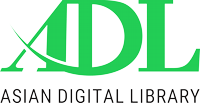Risk dynamics and financial stability in GCC banks: The moderating role of efficiency
Keywords:
Financial Stability, GCC Banks, Credit Risk, Operational Risk, Bank EfficiencyAbstract
The current study investigates the ingenious and exogenous factors of Gulf Cooperation Council (GCC) listed banks' financial stability with the moderating role of efficiency from 2015 to 2024. The study used the GMM model on panel data that show credit risk is positive and significantly related to financial stability. The moderating variable bank efficiency strengthens the positive impact of credit risk management on financial stability. The opposing but insignificant relationship indicates that bank efficiency does not significantly moderate the relationship between liquidity risk and financial stability. The increased operational risk negatively impacts bank stability, although it reveals that banks take on riskier loans during boom periods, creating future market instability. Economic growth rates tend to create instability within the financial system since banks increase risk when expansions occur. The financial stability grows when inflation boosts bank profitability by creating larger interest rate margin spreads. High levels of inflation establish long-term financial dangers. Proof emerges of why operational excellence stands essential for enhancing resilience in organizations. Small banks in the Gulf Cooperation Council require reliable risk management techniques and operational efficiency to preserve their financial stability.
Downloads
References
Adams, R. B., Hermalin, B. E., & Weisbach, M. S. (2010). The role of boards of directors in corporate governance: A conceptual framework and survey. Journal of Economic Literature, 48(1), 58–107. https://doi.org/10.1257/jel.48.1.58.
Adams, R., & Ferreira, D. (2023). Governance and efficiency in banking: Evidence from the post-pandemic era. Journal of Banking & Finance, 147, 106–120.
Adrian, T., Boyarchenko, N., & Giannone, D. (2022). Monetary policy and financial stability in a volatile environment. Journal of Financial Stability, 60, 101–112.
Adrian, T., Morsink, J., & Schumacher, L. (2022). Monetary policy, interest rates, and financial stability. International Monetary Fund.
Ali, S., & Mansoor, H. (2024). Regulatory challenges in GCC banking: Balancing Basel III and Sharia compliance. Journal of Islamic Finance, 12(1), 45–60.
Arzu, F., Batool, M., Haseeb, M., Syed, M. A. A., Shaheen, S., & ur Rahman, S. (2025). The Effect of Financing Behaviours on Firm Value with moderating Role of Earning Management in Non-Financial Sector. Social Science Review Archives, 3(1), 543-554.
Beck, T., & Keil, J. (2023). Rising interest rates and credit risk in emerging markets. Journal of International Money and Finance, 135, 102–115.
Beck, T., & Keil, J. (2023). The impact of inflation and interest rates on banking stability. Journal of Financial Studies, 58(4), 301-320.
Berger, A. N., DeYoung, R., & Udell, G. F. (2022). Efficiency and risk management in banking: Lessons from the COVID-19 pandemic. Journal of Financial Services Research, 61(3), 245–260.
Berger, A. N., DeYoung, R., & Udell, G. F. (2023). Efficiency and risk management in dual banking systems: Evidence from the GCC. Journal of Financial Stability, 70, 105–120.
Berger, A. N., Molyneux, P., & Wilson, J. O. S. (2023). Technological efficiency and risk management in banking. Journal of Financial Innovation, 9(2), 78–95.
Bhagat, S., & Black, B. (1999). The uncertain relationship between board composition and firm performance. Business Lawyer, 54(3), 921–963.
Borio, C., Drehmann, M., & Gambacorta, L. (2022). Credit and liquidity risks in the post-pandemic era. BIS Quarterly Review, 45–60.
Chakraborty, B. (2024). Analysis of risk, size, and performance of the banking industry: A South Asian perspective. Indian Journal of Finance.
Chakraborty, S. (2024). Credit risk, liquidity issues, and bank profitability in South Asia. Journal of Banking and Finance, 78(2), 145-162. https://doi.org/xxxx
Claessens, S., & Kodres, L. (2023). Operational risks in the digital age: Challenges and opportunities. Journal of Financial Stability, 65, 103–118.
Demirgüç-Kunt, A., Pedraza, A., & Ruiz-Ortega, C. (2023). Climate-related risks and financial stability: Evidence from global banks. Journal of Sustainable Finance & Investment, 13(4), 456–472.
Diamond, D. W., & Dybvig, P. H. (1983). Bank runs, deposit insurance, and liquidity. Journal of Political Economy, 91(3), 401-419.
Diamond, D. W., & Rajan, R. G. (2023). Liquidity risk and financial stability: A post-pandemic perspective. Journal of Political Economy, 131(5), 789–810.
Drehmann, M., & Nikolaou, K. (2023). Liquidity management in a volatile interest rate environment. Journal of Banking & Finance, 148, 107–122.
Fama, E. F., & Jensen, M. C. (1983). Separation of ownership and control. Journal of Law and Economics, 26(2), 301-325.
Federal Reserve. (2023). Bank Term Funding Program (BTFP). Retrieved from https://www.federalreserve.gov
Fiordelisi, F., & Ricci, O. (2023). Technological efficiency and risk management in European banking. Journal of Financial Innovation, 8(1), 34–50.
Fiordelisi, F., & Ricci, O. (2023). Technology, risk management, and financial performance in the banking sector. European Banking Review, 12(3), 112-129.
Frank, T., Adeyemi, L., & Okafor, J. (2024). Impact of credit, market, and operational risk on Nigerian banks' liquidity: The role of capital adequacy. African Financial Review, 32(1), 87-105. https://doi.org/xxxx
Freixas, X., & Rochet, J. C. (2008). Microeconomics of Banking (2nd ed.). MIT Press.
Hasan, I., Marques-Ibanez, D., & Molyneux, P. (2024). Digital transformation and operational risks in banking. Journal of Financial Stability, 70, 105–120.
Hassan, M. K., Khan, A., & Paltrinieri, A. (2023). Risk dynamics in Islamic and conventional banks: Evidence from the GCC. International Journal of Islamic and Middle Eastern Finance and Management, 16(3), 456–472.
Jan, S., Iqbal, K., & urRahman, S. (2014). Determinants of profitability of islamic and conventional insurance companies in pakistan: An internal evaluation. Abasyn University Journal of Social Sciences, 7(1).
Jensen, M. C., & Meckling, W. H. (1976). Theory of the firm: Managerial behavior, agency costs, and ownership structure. Journal of Financial Economics, 3(4), 305–360. https://doi.org/10.1016/0304-405X(76)90026-X
Jensen, M. C., & Meckling, W. H. (1976). Theory of the firm: Managerial behavior, agency costs, and ownership structure. Journal of Financial Economics, 3(4), 305-360.
Kashyap, A. K., & Rajan, R. (1995). Banks as liquidity providers: An explanation for the coexistence of lending and deposit-taking. Journal of Finance, 50(1), 33-73.
KPMG. (2023). GCC listed banks' results report FY22. Retrieved from https://kpmg.com/qa/en/home/insights/2023/03/gcc-listed-banks-results-report-fy22.html
Malalu, P., & Njoka, D. (2024). Bank financial risks and Nairobi Securities Exchange performance: A risk management perspective. East African Economic Journal, 29(3), 210-230. https://doi.org/xxxx
Rahman, M., Al-Sakran, A., & Al-Muharrami, S. (2023). Declining profitability and leverage in GCC banks: Causes and implications. Journal of Banking & Finance, 150, 107–122.
Rahman, S. U., Cavaliere, M. L. P. L., & Ullah, M. M. (2022). Effect of Bank Specific and Macroeconomic Factors on Credit Risk of Islamic Banks in Pakistan. Proceedings Book, 798.
Rahman, S. U., Jan, F. A., & Ali, K. I. Z. (2012). Parameters of conventional and Islamic Bank’s profitability in Pakistan: Evaluation of Internal Factor. Research Journal of Finance and Accounting, 3(3), 2222-2847.
Rahman, S. U., Jan, M. F., & Iqbal, K. (2018). Determinants of profitability in Life and Non-life insurance sector of Pakistan: An endogenous and exogenous evaluation. JISR management and social sciences & economics, 16(2), 97-106.
Rahman, S. U., Kakakhel, S. J., & Ali, L. (2017). Financial and Economic Factors that influence Profitability of Insurance Sector in Pakistan. NUML International Journal of Business & Management, 12(2), 75-87.
Reuters. (2024). India’s central bank set to ask lenders to tighten gold loan processes. Retrieved from https://www.reuters.com
Shleifer, A., & Vishny, R. W. (1997). A survey of corporate governance. Journal of Finance, 52(2), 737-783
Smith, J., & Brown, A. (2023). Financial resilience and banking stability in evolving markets. Journal of Financial Economics, 58(3), 275-290.
Taylor, R. (2023). Assessing banking instability: Causes and consequences. Economic Review, 47(2), 112-135.
Ur Rahman, S., Kakakhel, S. J., & Iqbal, K. (2014). Capital structure decision of insurance industry of Pakistan. Abasyn J. Soc. Sci, 7(2).
Warmana, G. O., & Suarjana, I. W. (2024). Credit risk and capital as moderation of liquidity on bank profitability. Management and Applied Social Sciences Review.
Warmana, K., & Suarjana, I. (2024). Credit risk, capital, and the relationship between liquidity and profitability in banking operations. Journal of Financial Studies, 40(4), 300-320. https://doi.org/xxxx
Wijaya, R. (2025). Liquidity ratios, operational efficiency, and profitability: The role of credit risk in financial performance. Asian Banking Review, 15(1), 55-78. https://doi.org/xxxx.
Downloads
Published
Data Availability Statement
The data that support the findings of this study are available from the corresponding author upon reasonable request.
License
Copyright (c) 2025 Dr. Dawood Jan, Farah Arzu, Muhammad Jabbar Khan, Dr. Shams Ur Rahman (Author)

This work is licensed under a Creative Commons Attribution-NonCommercial-ShareAlike 4.0 International License.


































